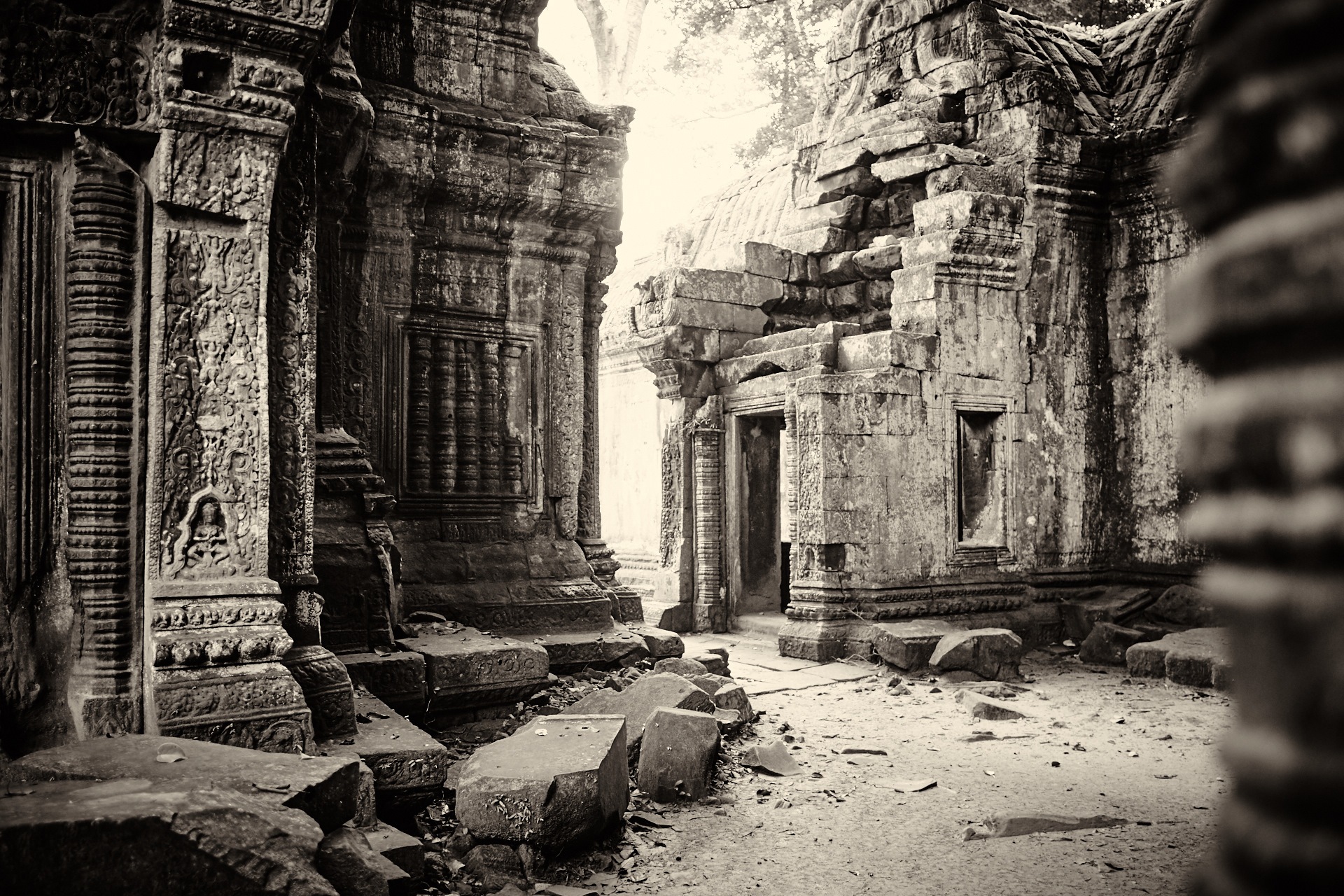On my last photo tour across South-East Asia I was reminded just how rewarding the temples of Angkor can be. Sure it takes a little local knowledge to make the most of the experience, and an appreciation of Black & White photography doesn't go astray either. This is not an "easy" photographic assignment by any means, but the rewards are there for the taking.
Not just inside the temples either. Unique villages on the Tonle Sap, local markets in nearby villages and the parade of bicycles and tuk tuks around dusk are just some of the added treats to look for. Monks are not the main game in town, ironically. I've heard of people hiring monks to pose for their photos in Angkor and I just wonder what the hell they think travel photography is all about. Buying a model or capturing real life? I've clearly made my mind up about such practices, but I'll ask you to contemplate if there's anything rewarding about staging a scene and then calling it "travel photography".

Angkor offers a wealth of treasures without needing to hire monks as models. It also sweetens the deal with some great culinary treats around town, some fine dining and some crazy Khmer street eats. Good hotels and a reliable source of tuk tuk drivers ready to take you to temples, or sometimes just take you for a ride. That's life in an NGO driven country.
On the downside the weather in Siem Reap is stifling and steamy. Hot just doesn't express the draining climate that bears down on photographers carrying heavy camera bags and a tripod. You need to stay cool and keep your energy in good condition. To this end I plan my visits with plenty of down time back at the hotel, either to dip in the pool or chill in the air-conditioned room with your laptop and some good RAW processing software.
Even so it's hard not to over do it. Sunrise session require getting up at 4am and there are over 400 hundred temples scattered across the conservation area to explore. You can't see them all, or even a fraction of them. There are temples I love that I haven't seen in five years, that's the nature of the challenge.

Sunrise is a tough one because no matter what your best shot looks like you'll always wonder if the next day will be better. Mostly it isn't, and this year we got lucky on the first day. Again. Enough cloud to catch colours in the sky, enough clear horizon to let that colour punch out before 6am. We got some great shots but it took a few more trips to sunrise in the following days to appreciate just how good the first one was.
Colour is the rare treasure around Angkor. Temples of black and grey hide in the forests and what little colour you do find is lost under drenching sunlight or dull clouds. There's little in between. Black & White processing does wonders for the final result. My first recollection of seeing photographs from Angkor were poorly reproduced B+W plates, and perhaps that harkening to an age gone by is why the B+W treatment still looks to satisfying to me. Angkor belongs in B+W and gains much from the fine detail and depth of dynamic range that converting to monochrome can offer.
In some respects the Ancient Kingdoms photo tour could be a Black & White workshop, as so much of our experience on the road translates with grace when given a touch of monochrome. It's addictive after a while, with so many ordinary frames taking on charm and appeal when converted. Arriving in Angkor at the end of the tour means we're already up to speed with the Black & White format and ready to hit the temples with our recently gained experience.
I look around at what everyone is shooting and can't help but like what I see.

For myself it's a challenge to find something new on every return visit, but everyone needs a challenge. Retracing some favourite steps reveals new ways to see an old friend. Ta Prohm and Beng Mealea are my pick of the bunch, with The Bayon and Angor Wat close behind. I've only just departed the airport at Siem Reap but I'm already thinking about what I'll come back with next year. A new lens, a new camera maybe. Something to give me a new perspective on many thousands of years worth of ruins.
Not all the temples are in ruins, but my favourites remain at least a little shambolic. Chaos is my friend when working on Black & White, as order and tidiness seem unsuitable for the retro feel that I'm angling for. Chaos not only comes from the lavastone and sandstone, but from the trees that invade the historical record. Leaves and vines give Angkor a unique character. I love the play between jungle and man, the way wilderness claims back what was once orderly and glorious. Nature always wins.
I first heard about Angkor nearly 20 years ago and at the time I was urged to see it soon, before the tourists ruin it. The tourists did come, but to date the ruins have survived being ruined any further. It takes some skill to dodge the crowds, I'll admit, but it's not impossible. You don't need to rush to see this place before the culture is destroyed by travellers, it's Angkor not China.
But do rush to put it high on the list of wonderful photographic experiences to discover, albeit with a touch of challenge and plenty of steamy jungle.


Keep Reading
Join Ewen's newsletter for monthly updates on new photography articles and tour offers...Subscribe Here









